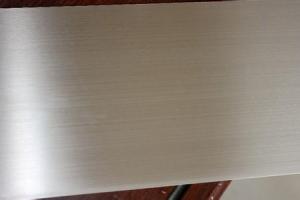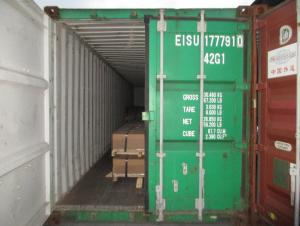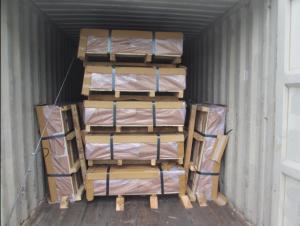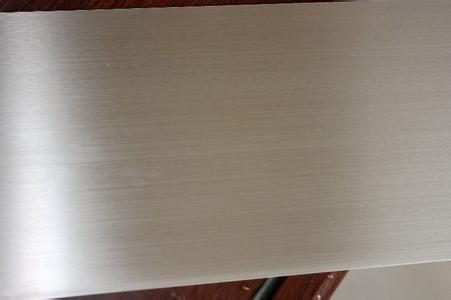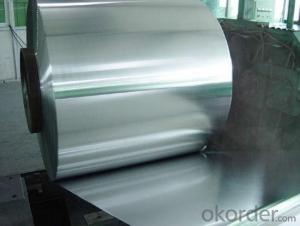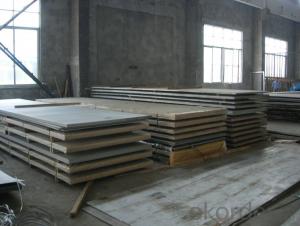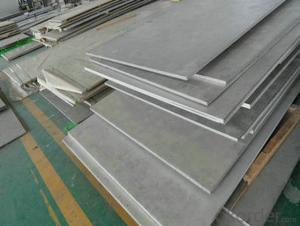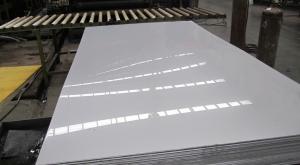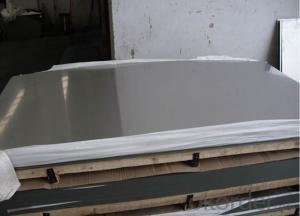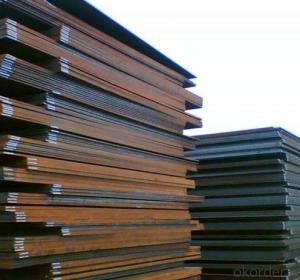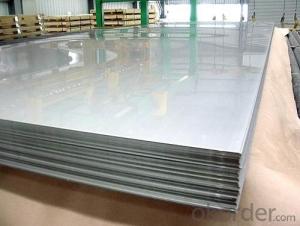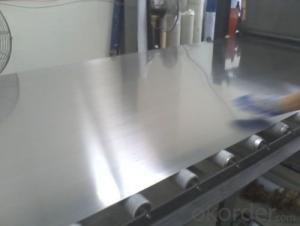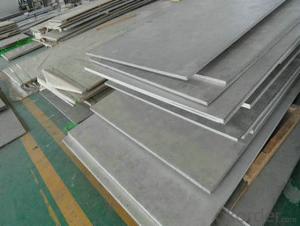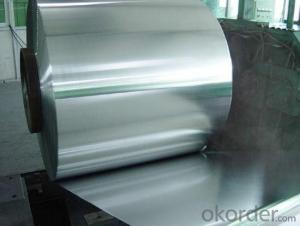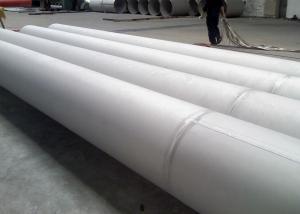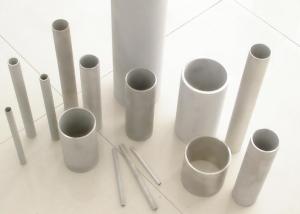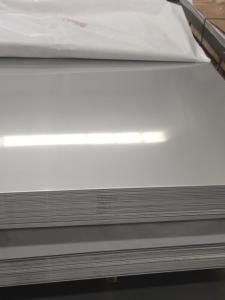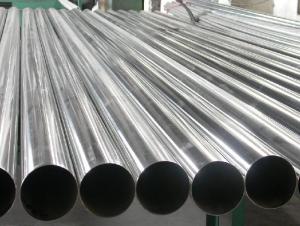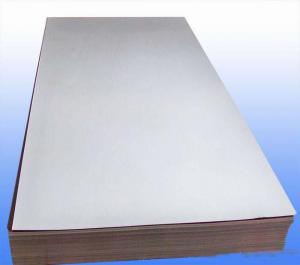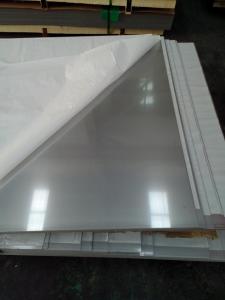Stainless Steel Plate And Stainless Steel Sheet
- Loading Port:
- Shanghai
- Payment Terms:
- TT or LC
- Min Order Qty:
- 1 m.t.
- Supply Capability:
- 2000 m.t./month
OKorder Service Pledge
OKorder Financial Service
You Might Also Like
1.Structure of Product Description
Cold rolled and hot rled Stainless steel sheet is widely used in the field of construction field and decoration field, etc. There are many different grades, such as: 200 series, 300 series, AND 400 /900/ SERIES, grade are as follows: 201, 202, 301, 304, 316, 410, 420, 430, etc.
The surface is including 8K, 2B, BA, Mirror Finish, Checkered, etc.
2. Main features of the product
a. Competitivebest rist-Class Service.
c. Shortest service.
3. Image.
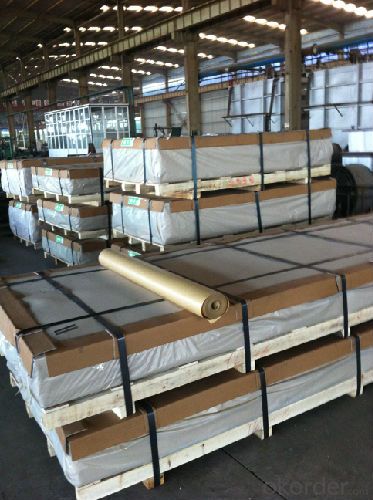
4. Product detailed sizes:
1000mm*2000mm,1000*1000,1200mm*1200mm,1250mm*2500mm,1500mm*3000mm, etc.
5. FAQ:
What is the quality standard?
---Usually our standard is GB3880-2006 or else.
What is the width range?
---It is from 500mm to 2500mm, etc.
What is the length range?
---It is from 2000mm to 6000mm, etc.
What is the MOQ for your products yet?
---Normally it is around 3 tons/each size.
How many tons did you export in one year?
---Normally it is around 9000 tons totally.
Where is your client from?
---Normally it is from Japan,canada,usa,uae,etc.
What is your mainly products?
---Normally they are stainless steel sheet, stainless steel coil, stainless steel checkered sheet, stainless steel mirror finished sheet, color coated stainless steel sheet, etc.
- Q: Are stainless steel sheets suitable for food processing or medical applications?
- Yes, stainless steel sheets are highly suitable for food processing and medical applications. Stainless steel is a popular choice in these industries due to its numerous beneficial properties. Firstly, stainless steel is resistant to corrosion, making it ideal for environments where hygiene and cleanliness are of utmost importance, such as food processing plants and medical facilities. Secondly, stainless steel is a non-porous material, meaning it does not absorb or retain bacteria, germs, or odors. This makes it easy to clean and maintain high levels of sanitation, crucial in food processing and medical settings where contamination must be minimized. Additionally, stainless steel has excellent strength and durability, allowing it to withstand harsh conditions, heavy use, and frequent cleaning without deteriorating. This makes stainless steel sheets a reliable and long-lasting choice for these demanding applications. Furthermore, stainless steel is non-reactive with food and many medical substances, ensuring that it does not leach any harmful chemicals or contaminants into the products being processed or the patients being treated. This is crucial for maintaining the safety and integrity of both food and medical materials. In conclusion, stainless steel sheets are highly suitable for food processing and medical applications due to their corrosion resistance, non-porous nature, strength, durability, and non-reactive properties. Choosing stainless steel ensures the highest standards of hygiene, cleanliness, and safety in these industries.
- Q: Can stainless steel sheets be used for decorative staircases?
- Yes, stainless steel sheets can be used for decorative staircases. Stainless steel is a versatile material that offers both aesthetic appeal and durability, making it a popular choice for various architectural and interior design applications. When used for decorative staircases, stainless steel sheets can provide a sleek and modern look, enhancing the overall appearance of the staircase. Additionally, stainless steel is resistant to corrosion and staining, making it ideal for high-traffic areas like staircases. It is also easy to clean and maintain, further adding to its suitability for decorative purposes.
- Q: What does stainless steel sheet S2 stand for?
- It is an alloy steel which is not easily rusted, but it is not absolutely rusty. Stainless steel plate refers to the atmosphere, steam and water and other weak medium corrosion of steel plate, and acid resistant steel plate refers to acid, alkali, salt and other chemical corrosive medium corrosion of steel plate. Stainless steel plate has been published since the beginning of twentieth Century, and now has a history of more than 1 centuries.
- Q: How to clean stainless steel plate cleaning?
- The mild way to clean stainless steel is simply to use hot water and clean soft cloth to wipe the surface, and then use dry metal with other soft cloth to prevent water stains thoroughly. I'm surprised at how much dirt on the surface comes to my pizza oven, just this step. When using this or any other way, please remember, "grain" stainless steel has run the whole surface in one direction on the minor groove metal and its best grain, rather than across it clean. Some people will tell you that this is to avoid scratching the metal or lodging the dust particles in the foods, where they can cause rust to form. This is likely to be true, but scrubbing food seems to be easier and more effective.
- Q: How do you prevent distortion when welding stainless steel sheets?
- To prevent distortion when welding stainless steel sheets, there are several key steps and precautions that should be followed: 1. Proper preparation: Ensure that the stainless steel sheets are clean and free from any contaminants such as oil, grease, or dirt. Thoroughly clean the surfaces using a suitable solvent or degreaser before welding. This helps to prevent any impurities from being trapped in the weld, which can lead to distortion. 2. Proper fit-up: Accurate fit-up of the stainless steel sheets is crucial to minimize distortion. Ensure that the edges of the sheets are aligned properly and that there are no gaps or misalignments. Proper clamping or tacking can also help to maintain the correct position of the sheets during welding. 3. Controlled heat input: Heat control is essential to prevent excessive distortion. Using the appropriate welding technique, such as TIG (Tungsten Inert Gas) or MIG (Metal Inert Gas), can help control the heat input. It is important to avoid overheating the stainless steel sheets as it can lead to warping and distortion. Maintaining a consistent and controlled heat input throughout the welding process is crucial. 4. Weld sequence: Proper planning of the weld sequence can also help to minimize distortion. Start from the center and work outward in a balanced manner to distribute the heat evenly. This prevents localized heating, which can cause distortion. Alternating between sides and allowing each weld to cool before moving to the next one can also help to reduce distortion. 5. Proper welding technique: Choosing the right welding technique and parameters is important. For instance, using a lower heat input, slower travel speed, and smaller weld bead can minimize distortion. Additionally, using a backstep technique, where the weld travels in a forward and backward motion, can help distribute the heat and reduce distortion. 6. Preheating and post-weld treatment: Preheating the stainless steel sheets can help reduce the temperature gradient and minimize distortion. The preheating temperature should be within the recommended range for the specific stainless steel grade. After welding, it is advisable to perform post-weld treatment, such as stress relieving, to minimize residual stresses that can lead to distortion. By following these steps and precautions, it is possible to significantly reduce distortion when welding stainless steel sheets. However, it is important to note that each welding process and stainless steel grade may have specific requirements, so referring to the manufacturer's guidelines and seeking professional advice is recommended for optimal results.
- Q: Are stainless steel sheets safe for contact with food?
- Yes, stainless steel sheets are safe for contact with food. Stainless steel is a widely used material in the food industry due to its non-reactive and corrosion-resistant properties. It does not leach harmful chemicals or flavors into food, making it a safe choice for food preparation and storage. Additionally, stainless steel is easy to clean and maintain, minimizing the risk of bacterial growth. However, it is important to note that not all stainless steel is created equal, and it is recommended to choose food-grade stainless steel that meets specific standards for food contact.
- Q: What are the different types of mirror finishes available for stainless steel sheets?
- There are several different types of mirror finishes available for stainless steel sheets, each offering a unique appearance and level of reflectivity. 1. #8 Mirror Finish: This is the most reflective and commonly used mirror finish. It has a highly polished surface with a mirror-like appearance, providing excellent reflectivity and clarity. This finish is achieved by using progressively finer grit abrasive compounds during the polishing process. 2. #7 Mirror Finish: This finish is slightly less reflective than the #8 mirror finish but still offers a high level of reflectivity. It has a smooth, shiny surface with minimal distortion, making it suitable for applications where a high level of reflectivity is desired. 3. #6 Mirror Finish: This finish has a moderately reflective surface with a slightly duller appearance compared to the #7 and #8 mirror finishes. It provides good reflectivity while hiding minor surface imperfections. It is often used in architectural applications where a balance between reflectivity and durability is required. 4. Satin Mirror Finish: This finish has a satin-like appearance with a low level of reflectivity. It has a smooth surface with a brushed texture, providing a subtle and sophisticated look. It is commonly used in decorative applications such as interior design or furniture. 5. Antique Mirror Finish: This finish is achieved by applying special chemical treatments to the stainless steel surface, creating a vintage or aged appearance. It has a reflective surface with a distorted and tarnished look, adding a unique and artistic touch to various applications. Overall, the choice of mirror finish depends on the desired level of reflectivity, aesthetic preferences, and specific application requirements.
- Q: Can stainless steel sheets be used for water tanks or storage containers?
- Yes, stainless steel sheets can certainly be used for water tanks or storage containers. Stainless steel is a popular choice for these applications due to its excellent corrosion resistance and durability. It does not rust or corrode easily, making it ideal for storing water or other liquids. Stainless steel is also hygienic and easy to clean, which is important for maintaining the purity of stored water or food products. Additionally, stainless steel sheets can be easily fabricated into various shapes and sizes to suit the specific requirements of the water tank or storage container. Overall, stainless steel sheets are a reliable and long-lasting option for water tanks or storage containers.
- Q: What's the difference between stainless steel 304 2B board and Ba board?
- 304 stainless steel2B board: without glossBA board: an ordinary mirror that shines a littleStainless steel and mirror, that is, 8K board, like a mirror
- Q: Are stainless steel sheets fire resistant?
- The fire resistance properties of stainless steel sheets are exceptional. With their high melting point and low thermal conductivity, stainless steel can endure prolonged exposure to high temperatures without experiencing significant structural alterations or losing strength. As a result, stainless steel sheets possess remarkable resistance to fire and heat harm. Furthermore, stainless steel does not emit toxic fumes when exposed to fire, further enhancing its safety in environments prone to fires. Consequently, stainless steel sheets are frequently employed in situations where fire resistance is of utmost importance, such as the construction of fire doors, fire escapes, and fire-resistant enclosures.
Send your message to us
Stainless Steel Plate And Stainless Steel Sheet
- Loading Port:
- Shanghai
- Payment Terms:
- TT or LC
- Min Order Qty:
- 1 m.t.
- Supply Capability:
- 2000 m.t./month
OKorder Service Pledge
OKorder Financial Service
Similar products
Hot products
Hot Searches
Related keywords
